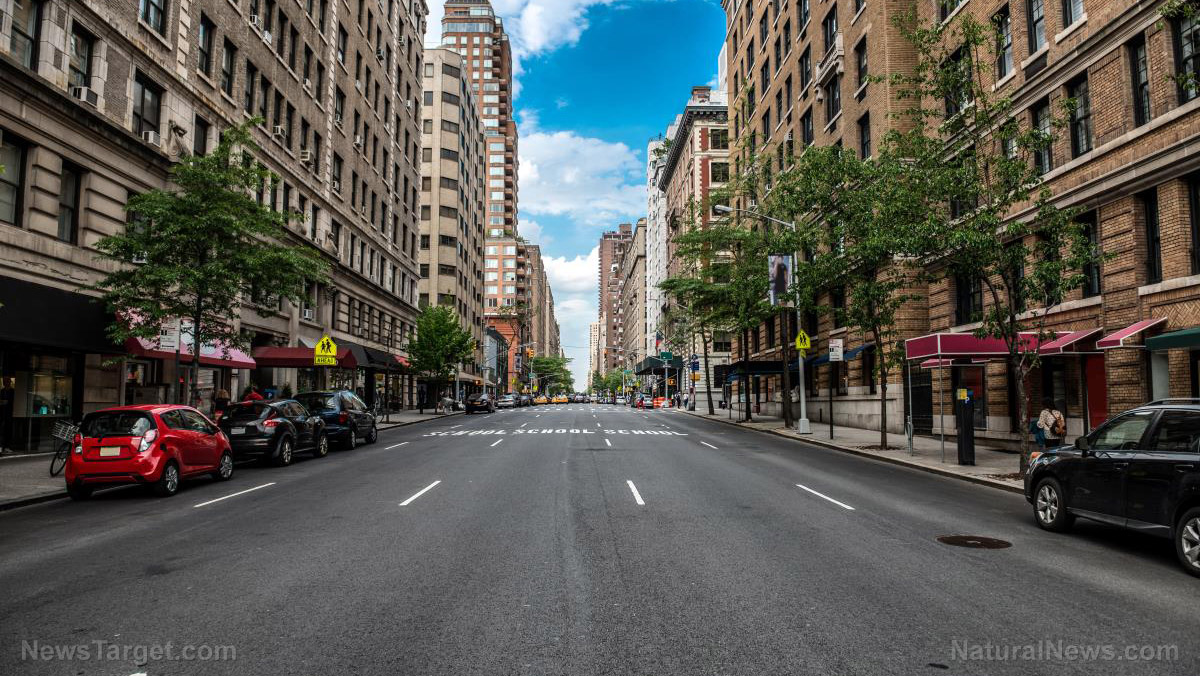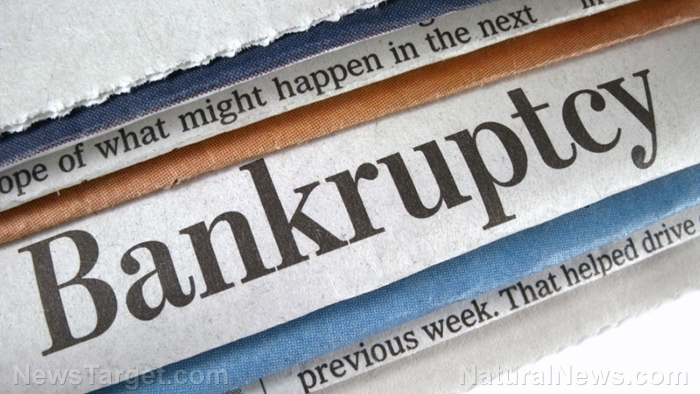New York City commercial real estate in trouble as major building sells at 97.5% discount
By isabelle // 2024-08-06
Tweet
Share
Copy

The pandemic marked a seismic shift in the way business is conducted, and while many companies discovered the cost savings and other benefits associated with remote working, commercial real estate is paying the price. As restrictions were lifted and life returned to normal, many businesses found that the new way of doing things worked far better for them, and this has seen a huge drop in demand for pricey office buildings in major cities. But one recent transaction in particular is getting a lot of publicity for illustrating just how bad the situation has become in New York City by selling at a 97.5% discount.
The building in question is at 135 West 50th Street in Midtown Manhattan. The 23-story structure was previously the headquarters of Sports Illustrated and has counted jewelry retailer Zales and the New York Telephone Company (now Verizon) among its previous occupants. The Midtown mainstay, which was built in 1963, was designed by one of the same architects who worked on the original World Trade Center and is known for its aluminum and glass exterior. Although this and buildings like it have long been the foundation of the city’s thriving office sector, they are now becoming relics of the past, with prices to reflect this fall from grace.
The building’s current owner purchased it in 2006 for an incredible $332 million. It was nearly fully occupied at that time as office demand was high and the real estate sector was booming. However, it sold for a paltry $8.5 million last week, and its price is serving as a cautionary tale of what the city – and by extension, the U.S. commercial real estate sector – can expect moving forward.
Insiders caught off guard by how quickly values are dropping
The developer whose family owned the building prior to its 2006 sale, David Sturner, told the New York Times that he was surprised by just how much its value had dropped. He said despite not being the best asset they owned, they considered it “solid.” “What’s shocking is how fast the valuations dropped now that we’ve seemingly reached bottom, or close to it,” he stated. He told the publication that this is just another example of the new reality in the office building sector in the city as the need for office space drops as companies increasingly rely on remote and hybrid work. He also pointed out that most buildings are simply not considered a safe investment these days. The founder of commercial sales broker BK Real Estate Advisors, Bob Knakal, said the current state of affairs has caught many people off guard as “nobody ever anticipated that what has happened in the office market was going to happen.” Although the current owner, an investment fund, previously worked on a deal to sell it for under $50 million, it ultimately fell through, so they decided on a two-day public auction on the online real estate auction site Ten-X. It ultimately didn’t go far from its starting bid of $7.5 million, and the seller changed their reserve price to help the transaction go through. The new owner is not yet known and will not be disclosed until the sale has officially closed. It's worth noting that the auction is for the building only; the land is owned by a publicly traded real estate company that collects a monthly lease. Right now, the rent from the few tenants left in the building isn’t even enough to cover these payments; the current occupancy has dropped 40% in the last year to just 35%. Commercial real estate data firm CoStar predicts that 2024 and 2025 will be the worst years on record when it comes to office buildings, although the full extent of the issue may not be obvious until several years down the line. Rising interest rates are exacerbating the problem, and many owners cannot afford a new mortgage as their tenant numbers drop. Last week, data provider MSCI revealed that banks and other lenders have been seizing control of distressed commercial buildings at the highest rate in nearly 10 years, with portfolios of seized and foreclosed office buildings and other commercial property surpassing $20 billion during the second quarter. As a result of the surge in foreclosures, experts predict that the bottom is quickly approaching. Sources for this article include: ArmstrongEconomics.com NYTimes.com NYTimes.com WSJ.comTweet
Share
Copy
Tagged Under:
collapse market crash finance banking risk NYC money supply inflation bubble Real Estate commercial real estate properties economic riot finance riot
You Might Also Like
They never learn: Chinese scientists create mutant EBOLA virus
By Ava Grace // Share
LL Flooring files for bankruptcy, will close 94 stores amid declining sales
By Richard Brown // Share
Fitch downgrades Israel’s credit rating amid prolonged Gaza conflict
By Richard Brown // Share
Germany’s EV sales PLUMMET by almost half in first 6 months of 2024
By Ava Grace // Share
Italy doubles “flat tax” on income earned abroad by wealthy residents
By Richard Brown // Share
Recent News
Hollywood embraces AI: Disney bets $1 billion on OpenAI
By kevinhughes // Share
Netflix children's programming heavily saturated with LGBT themes, report finds
By bellecarter // Share











